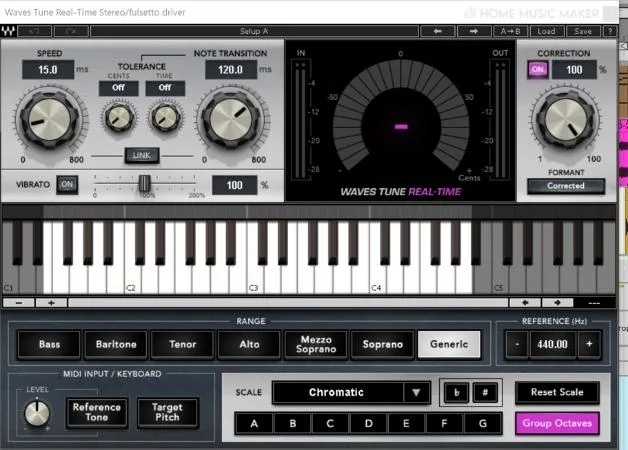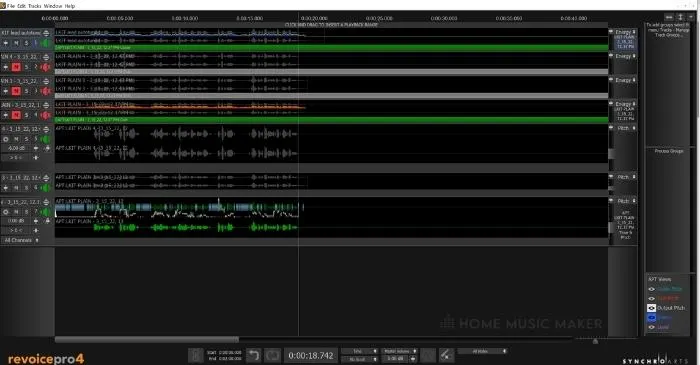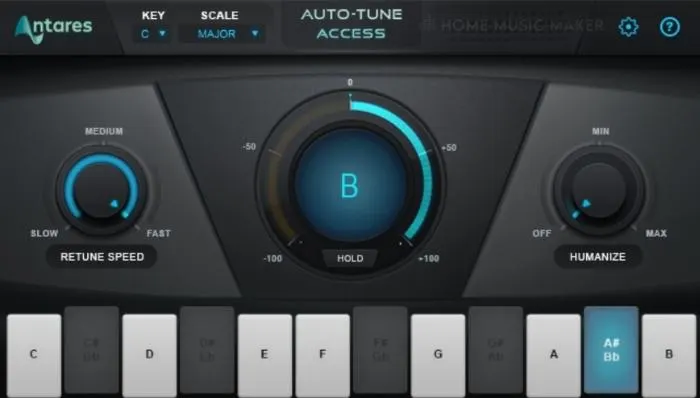While Ableton does not have a built-in auto-tuning effect, there are many third-party plugins and software that can help us create a radio-ready vocal. This includes the user-friendly and industry-standard Antares Auto-tune plugin and the ever-popular Melodyne.
Pitch Correction In Ableton
Whether correcting your own vocal or touching up the singer’s pitch who just left the session, autotune and pitch correction are vital tools in the modern music producers’ toolbox.
Although Ableton does not have its own in-box pitch correction tool, we can use several plugins and external software to get a pitch-perfect vocal.
In this tutorial, I’ll explain the major categories of pitch correction and a few ways we can use Ableton tools to change a vocal’s pitch.
Let’s jump straight in!
What you Will Need to Follow This Tutorial:
You will need a copy of Ableton Live and separate pitch correction software or plugins, such as Melodyne or Autotune.
What Is Pitch Correction For Vocals?
Pitch correction can be used on any track but is most common on vocals, as singers can struggle to hit a pitch with complete accuracy.
The Difference Between Autotune And Pitch Correction
Autotune
Autotuning plugins function as effects to tune vocals (or any instrument you put it on) in real-time.

You can drag the VST plugin onto your channel. It will automatically move each note of the melody to the nearest pitch/note in your selected scale.
These plugins usually include settings that affect how quickly the pitch’s key, vibrato, and pitch shift are adjusted.
Some of the more advanced products may also include formant control.
Auto-tune and Waves Tune are examples of such plugins.

These programs have the benefit of being fast and easy to use.
They are most effective when a singer has hit the right notes but is just a little flat or sharp.
These programs can also be pushed to extremes if you want to sound like T-Pain!
Pitch Correction
On the other hand, Pitch correction is a precision tool that allows you to edit each individual note (or even individual syllables!) of a singer’s performance.
This is better if you need to change the melody performed by the singer or want to tune important notes but avoid an overly-produced sound.
Some examples of this software are Melodyne and Revoice Pro.

Pitch correction software can also be used to create artificial backing vocal and harmony lines by repitching notes one by one.
This can be done by combining an automatic repitch tool with Ableton’s pitch warping. However, that is a less precious method.
These programs are great options if you are looking for more minute control over the vocal performance. However, it can take a lot of skill to use it correctly. It takes much longer to process a vocal than an autotuning plugin.
How To Use Ableton To Pitch Correct Vocals
Although Ableton does not have an automatic pitch correction effect, You can repitch a vocal sample by hand using Ableton’s Pitch Warp.
This is a complex process and requires a lot of skill to get just right.
It’s important to note that if a vocal is too far off-key, it may be impossible to pitch correct it naturally.
Using this method can be hard to get a vocal to sound natural. If you are struggling with it, try using Complex Pro Warp Mode, which will allow you to control the transients to get a more natural vocal sound.

One trick I find helpful in making this process easier is creating a MIDI channel that plays the melody in isolation. This way, you can clearly hear the pitch the note should be.
Also, remember that the human voice naturally fluctuates in pitch and doesn’t sit directly in the center of a tone.
In my experience, it is best to have this MIDI melody added to the track before working with a singer who struggles with pitch. This way, they have a guide they can follow while recording if needed.
I would also always consult with the vocalist you’re working with about what kinds and how much pitch correction they are comfortable with.
Many singers are cool with whatever fun type of vocal processing you want to throw at them. Still, the vocal performance is personal, and a singer may want to be part of the editing process.
Best Autotune Plugin or Ableton?
There is no single best autotune plugin for Ableton.
Antares Auto tune is the industry standard because of how customizable yet easy to use. Autotune, however, can be prohibitively expensive, and cheaper options are available.
Auto-tune comes in many tiers, which vary in price, complexity, and CPU load.
Auto-tune Pro is the most heavy-duty and customizable. At the same time, Auto-tune Access is the most simple model featuring only two settings.

Related Questions
Does Ableton Have Pitch Correction?
Ableton does not come with its own internal pitch correction. If you only need to adjust the vocal’s pitch a small amount (and have a good ear), you can repitch the vocal clip manually. Just be sure to clip the audio track, so you are just adjusting the pitch of the single note you need to repitch.
How To Use Pitch Correction In Ableton?
The way you use pitch correction in Ableton will depend on your chosen pitch correction method.
Autotune and Waves Tune are two examples of pitch correction plugins you can simply drag onto the audio channel you wish to pitch correct.
Others, such as Melodyne or ReVoice Pro, are stand-alone programs that you will use by dropping your pre-pitch-corrected vocal in and exporting it as a new audio file with the correction printed on it. Some of these stand-alone programs can also run as plugins.
Autotune is the most popular pitch correction plugin, but alternatives are available, such as Waves Tune.
How do I Duplicate Vocal Tracks in Ableton Live?
You can duplicate a vocal track by selecting the channel containing the vocal track you wish to duplicate and pressing “ctrl+D.”
However, having two identical vocal tracks will create phase issues. This can be addressed by moving one of the vocal files back 12-30 milliseconds and shifting the pitch 2-10 cents.
How do I Naturally Pitch Correct a Vocal?
If you need to pitch correct a vocal but don’t want it to sound like the vocal was pitch-corrected, you should use a few settings to smooth out your autotune.
The first thing you should do is raise the return speed. I often use a return speed of 30-220ms if I want a vocal to sound natural. Next, enable natural vibrato. This will allow notes to waver in pitch rather than holding them to the exact right frequency. Finally, some autotune software has a “humanize” setting that controls how and where the effect is applied.
Want to find out more? Check this article on How To Change The Pitch Of A Sample In Ableton.

 Want to connect with other music producers for help and guidance?
Want to connect with other music producers for help and guidance?